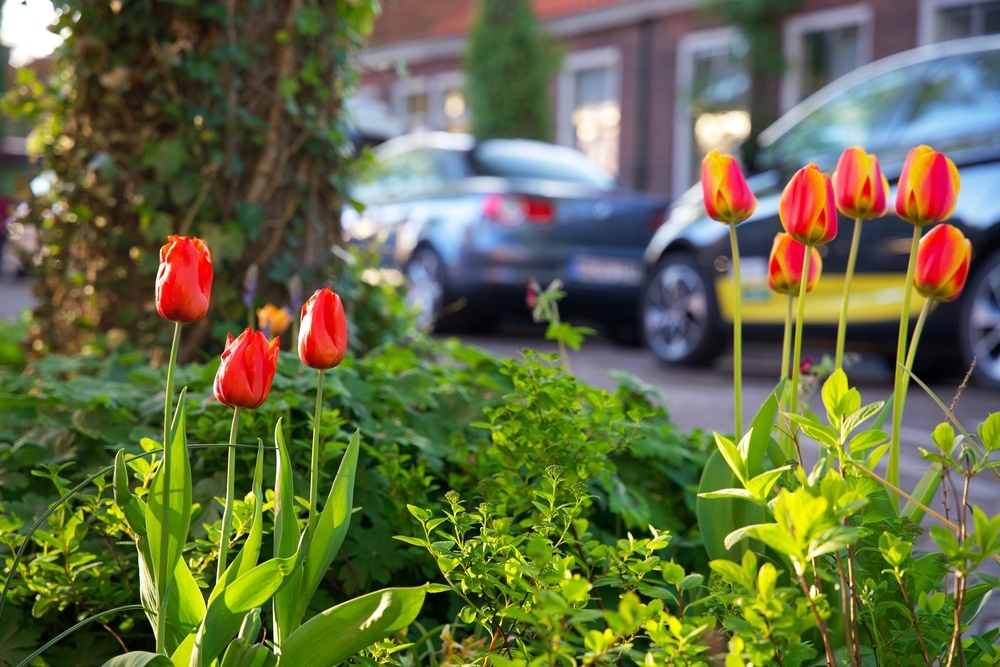You don’t need a huge backyard, a green thumb, or a fancy setup to grow your own food. What you do need is a fresh mindset—and that’s where guerilla gardening comes in. This rebellious but rewarding approach to gardening is all about making the most of neglected or underused outdoor spaces. Whether it’s a forgotten corner of your yard, an overgrown alley, or even a strip of gravel by your driveway, there’s potential waiting to be unlocked. With a little creativity and some down-to-earth tips, you’ll turn overlooked spots into edible goldmines in no time.
What Is Guerilla Gardening?
Guerilla gardening started as a movement where people planted flowers or vegetables in abandoned lots, neglected parks, and random public spaces—usually without permission. But guess what? You don’t have to sneak around in the night with a shovel to take part.
You can bring the guerilla spirit into your own yard. Think of it as a way to reclaim and reimagine any unused outdoor space. It’s about making things grow where no one expected them to—especially you. And the best part? You get fresh herbs, fruits, and veggies as your reward.
Why Your Yard Is Hiding a Goldmine
Take a walk around your own yard. Look at the spaces you usually ignore—the side of the house, that dry patch by the fence, or the shady corner behind the shed. These spots are often left empty because they seem too awkward or difficult to use.
Guerilla gardening flips the script. Instead of focusing on “perfect” garden beds, you focus on opportunity. A few pots here, some vertical planters there, and boom—you’ve got a mini farm where weeds used to live. This approach is ideal for small yards, renters, and anyone who wants to grow food without overhauling their landscape.

The Guerilla Mindset: Start Where You Are
The key to guerilla gardening is starting small. Don’t overthink it. Don’t wait until you have the “right tools.” Just start. That sunny patch of dirt by your garage? Plant lettuce. The brick wall along your driveway? Add wall-mounted pots for strawberries. Have an old pallet lying around? Turn it into a vertical herb garden.
This method isn’t about perfection. It’s about productivity. Use what you have, plant what you’ll eat, and let nature do its thing. You’ll be amazed how quickly these little patches can grow into something useful—and delicious.
What to Grow (Even If You’ve Never Gardened Before)
If you’re new to gardening, start with plants that are:
- Low maintenance
- Quick to grow
- Actually useful in your kitchen
Here are some guerilla gardening favorites:
- Herbs: Basil, mint, parsley, chives, thyme
- Greens: Lettuce, spinach, arugula
- Compact veggies: Cherry tomatoes, radishes, spring onions
- Vertical growers: Pole beans, cucumbers, peas
- Root crops: Carrots, beets, potatoes (even in buckets!)
These plants are hardy, forgiving, and great for awkward or small spaces. They also give you a fast payoff—something every guerilla gardener loves.
Soil Doesn’t Have to Be Perfect
One of the myths of gardening is that you need “the perfect soil.” In guerilla gardening, you work with what you’ve got and improve it as you go. If the soil is dry and compacted, break it up with a shovel or pitchfork. Mix in some compost if you have it. Don’t have compost? Coffee grounds, crushed eggshells, and veggie scraps buried under the dirt will do the trick over time.
You can also use containers, buckets, crates, or even old tires filled with soil. The idea is to grow food, not win landscaping awards.
Watering Hacks for the Lazy (or Busy) Gardener
Guerilla gardening thrives on low effort and smart systems. Instead of watering daily, set up low-maintenance methods like:
- Mulching with leaves, straw, or grass clippings to hold in moisture
- Repurposing soda bottles as slow-drip waterers
- Catching rainwater in buckets or barrels
- Planting drought-tolerant crops in drier areas
The more you let nature handle, the more successful your garden will be. Plus, these tricks help save water and time—win-win!
Vertical Guerilla Gardening: Go Up, Not Out
Short on ground space? No problem. Go vertical. Guerilla gardening isn’t limited to flat garden beds. Try:
- Hanging planters from fences or balcony railings
- Attaching recycled containers to walls
- Using old ladders or bookshelves as plant stands
- Building simple trellises for climbing plants
This is especially useful for renters or urban gardeners with tiny outdoor spaces. Even a narrow alleyway can become a vertical food forest with a little imagination.

Guerilla Gardening with Kids
Want to get the kids off their screens and outside? Turn guerilla gardening into a family project. Give each child a planter or a section of yard to experiment with. Let them pick seeds and decorate containers. Watching something they planted grow into food is magical—and teaches patience, responsibility, and the joy of eating something you grew yourself.
Bonus: kids are more likely to eat veggies they helped grow.
Reuse, Recycle, Repurpose
One of the coolest parts of guerilla gardening is that it doesn’t need to cost much. Use what you already have:
- Old boots = planters
- Broken chairs = trellises
- Cracked buckets = containers
- Cardboard boxes = weed blockers
- Plastic bottles = watering tools
The more creative you get, the more fun the process becomes. It’s resourceful, sustainable, and deeply satisfying.
Common Guerilla Gardening Mistakes (and How to Avoid Them)
Let’s keep it real. Not every plant survives. Not every spot will be perfect. But here are a few things to keep in mind:
- Don’t overwater—especially in containers
- Don’t crowd too many plants in one pot
- Choose sun-loving plants for sunny spots and shade-tolerant ones for shady corners
- Keep an eye on pests (DIY solutions often work better than chemicals)
Remember, guerilla gardening is about experimentation. If something doesn’t work, try something else. That’s half the fun.
Your First Guerilla Garden in 5 Easy Steps
- Pick a spot – Choose an unused area in your yard or balcony
- Find a container – Anything that can hold soil will do
- Add dirt and compost – Use store-bought or homemade
- Plant something simple – Like lettuce or herbs
- Water and wait – That’s it!
Stick with it, tweak as you go, and you’ll have fresh food at your fingertips before you know it.
Guerilla Gardening Through the Seasons
Spring and summer are ideal for most plants, but guerilla gardening doesn’t have to stop when the weather cools down.
- Fall: Plant leafy greens, garlic, and root crops
- Winter: Grow herbs indoors or try cold frames for outdoor greens
- Spring: Start seeds early or direct sow easy crops like radishes
Seasonal planting keeps your yard active all year and gives you something to harvest even when the rest of the garden is sleeping.
Harvest Time = Payoff Time
Once your first crops are ready to pick, you’ll feel the full joy of guerilla gardening. Nothing beats snipping fresh basil for pasta or pulling a tomato off the vine for your sandwich.
Harvest often, share with friends and neighbors, and enjoy what you’ve grown. The more you pick, the more your plants produce. It’s a natural, tasty reward for your minimal effort.
Guerilla gardening isn’t about rules or perfection—it’s about creativity, resourcefulness, and making the most of what you have. With a little effort and a touch of rebellion, you can turn neglected corners of your yard into fresh, edible abundance. Whether you grow a pot of mint on your porch or turn your entire fence line into a vertical veggie patch, each step brings you closer to self-sufficiency and satisfaction. Start small, have fun, and let your guerilla gardening journey grow naturally. Your unused spaces aren’t empty—they’re full of potential, waiting to be planted.











